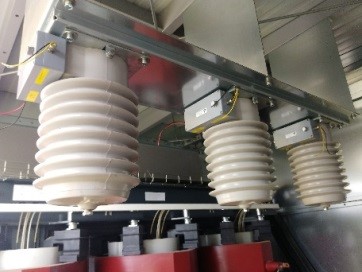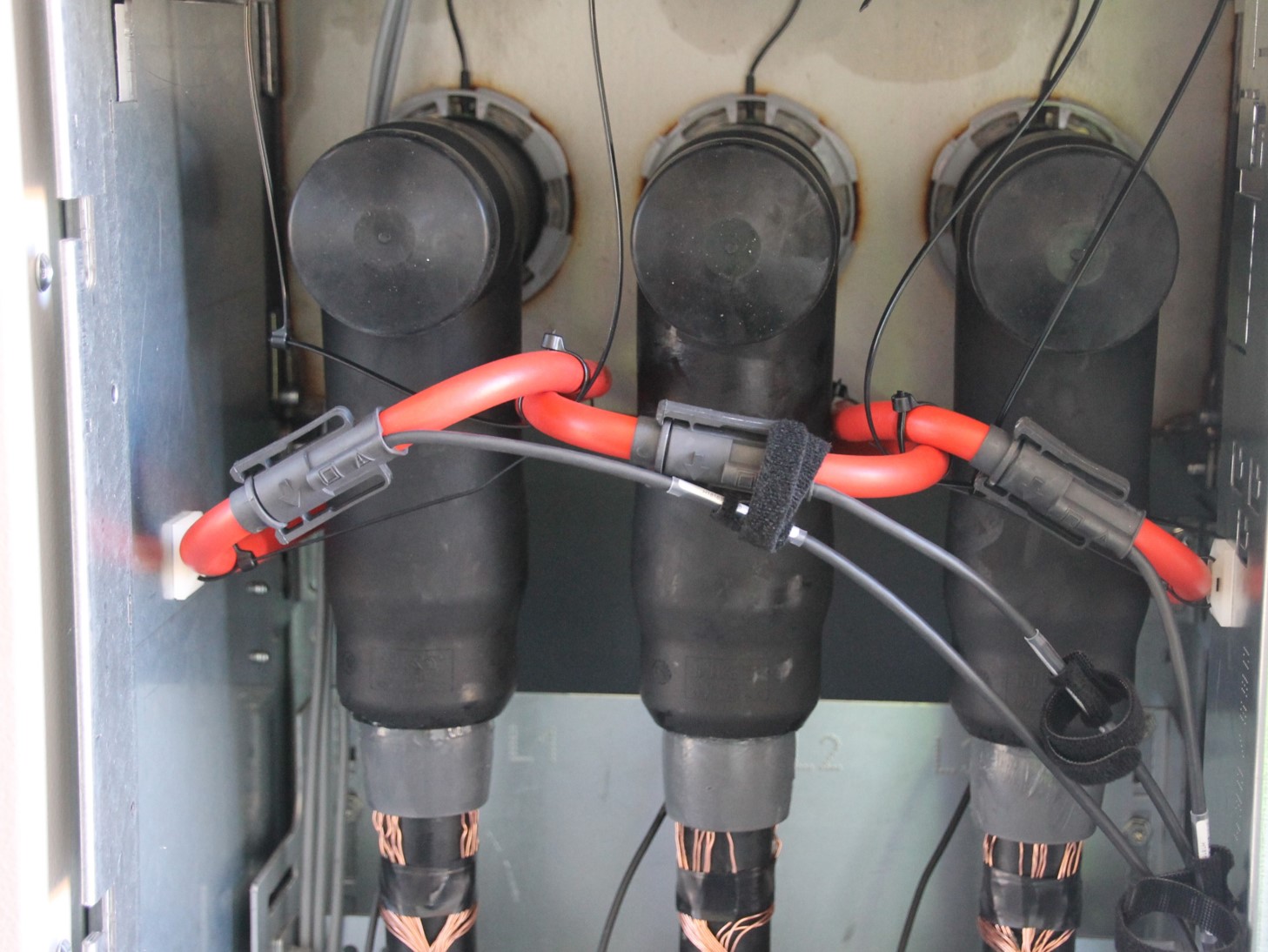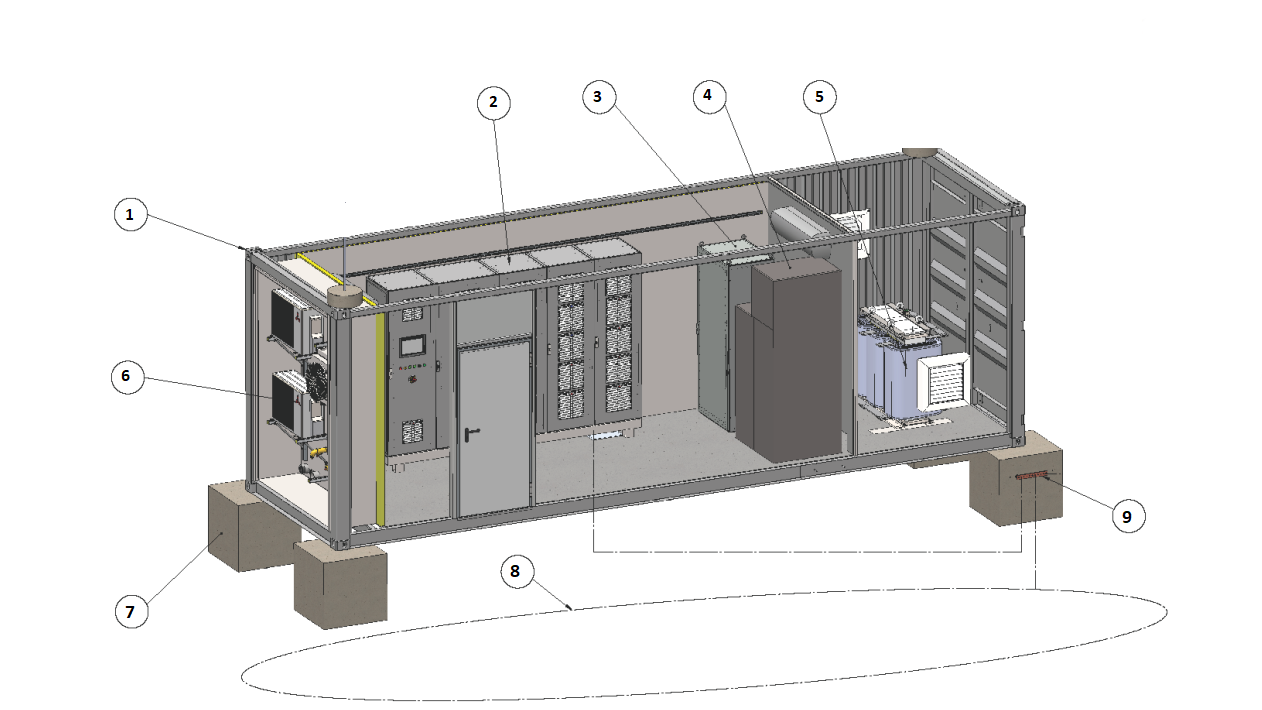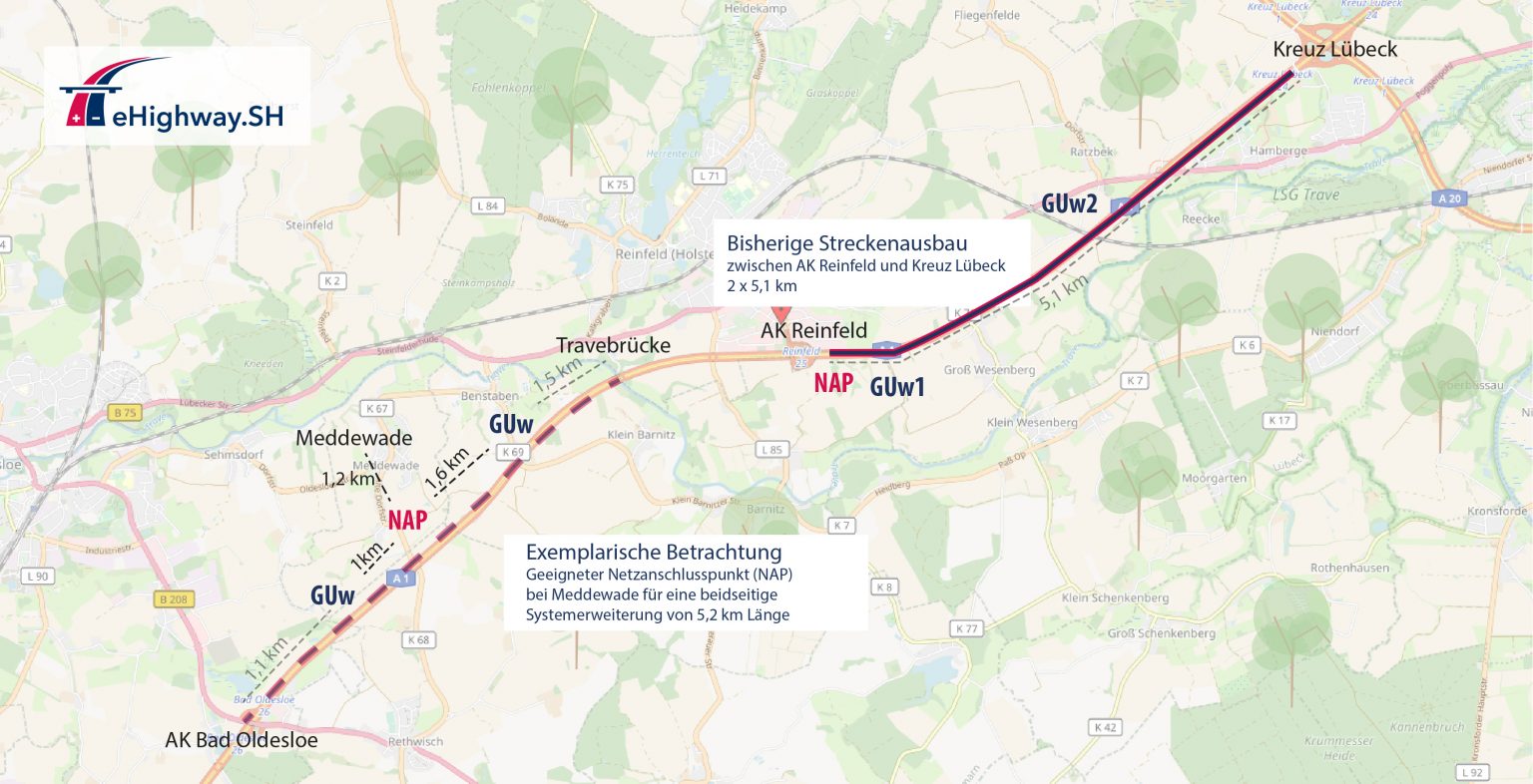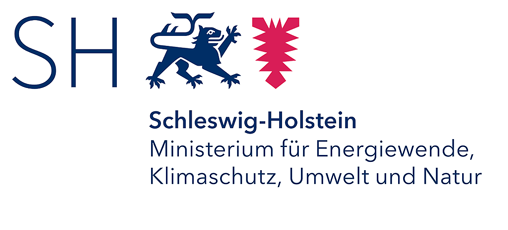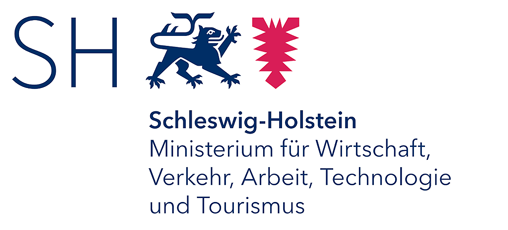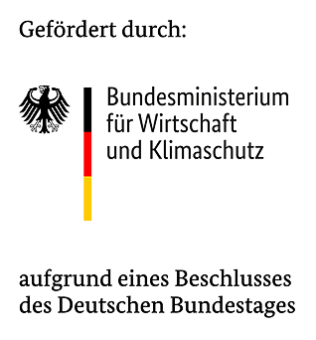Energy and grid feedback
Kiel University of Applied Sciences: Institute for Electrical Power Engineering, Prof. Dr.-Ing. Hans-Jürgen Hinrichs
Based on the analysis and evaluation of the resulting grid repercussions caused by the FESH-eHighway facility, it should be possible to estimate the effect of the facility on the public power grid and subsequently develop a grid expansion strategy for the possible expansion of the eHighway.
Background
The energy supply of the eHighway system is provided by the public electrical grid. In the process, the OH trucks draw electrical energy via overhead contact lines in the form of direct current. The overhead line is in turn fed by so-called rectifier substations, which convert AC-side energy from the public electrical grid into DC-side energy. Rectification of the alternating current creates network feedback, which results in the influence of the consumer on the stability of the public electrical network in the form of voltage dips, harmonics, flicker, etc. Analysis and evaluation of the grid feedback associated with the eHighway system will provide insight into the impact of the rectifier substations on the public electric grid.
The concept of the overhead power supply of the eHighway system was taken from the fields of streetcars and trolley buses. The use of rectifier technology is to ensure a stable and reliable supply. Due to the geographical conditions in Schleswig-Holstein , there is ahigh proportion of renewable energy plants, which generally feed into the public electrical grid via converter technology. In view of the fact that an inverter emits comparatively less grid feedback than a rectifier, research is to be carried out to determine which technology (rectifier/inverter) is more suitable with regard to grids with a high proportion of renewable feed-in. The basis for this is the evaluation and analysis of the network feedback effects and the determination of the energy efficiency of both technology variants.
For a possible expansion of such an eHighway facility, a corresponding network expansion strategy is also necessary. This includes the determination of necessary grid connection points as well as the associated grid connection costs. For this purpose, the route between Hamburg and Lübeck will be investigated in cooperation with the local grid operator with regard to possible connection points and, based on this, the grid connection costs for the grid integration of the rectifier substations will be determined.
Analysis and evaluation of the outgoing network reactions of the substations
For the recording and validation of current and voltage curves, measurements are carried out at medium voltage level and at DC voltage level at three selected measuring points in the area of the substations and the grid connection point. Voltage and current transformers are used for measurement data acquisition.
Network quality and network stability
The evaluation of the no-load measurement (actual condition recording) has shown that the emission limits of the medium-voltage network are currently far below the permissible range. Network quality indicators describe the condition and quality of the network.
The evaluation of the cumulative distortion for power at the medium voltage level for an OH truck operation in the load case shows that the operation has little negative impact on the power quality.
Technology comparison between rectifier and converter for use in grids with high renewable energy content
For a comparison of technologies, the study compares the outgoing network feedbacks of both substations (rectifier and converter). Various load scenarios are run through in order to record and evaluate not only the voltage behavior but also grid-specific effects (system services) of the medium-voltage grid.
Furthermore, energy balances of different load scenarios from long-term measurements for both technologies (rectifier and converter) are established.
In addition to the technical comparison, there is the question of the extent to which the converter can dynamically support the grid and provide power reserves at short notice to compensate for grid fluctuations.
Development of a network expansion strategy
An analysis of the possibilities for connecting DC substations to the public electrical grid between Hamburg and Lübeck will provide initial indications of which sections might be suitable for closer consideration of a system expansion. Among other things, the grid connection costs are determined in relation to the suitable grid connection points and to the voltage level of the grid operator.
For the development of a network expansion strategy, a 34 km route between Hamburg and Lübeck is considered:
- Identification of suitable expansion areas with associated grid connection points including voltage level
- Determination of the required cable length in relation to the grid connection of the extension line along public service roads
- Determination of the grid connection indicators for the identification of possible grid connection performance
- Recording of the grid connection costs (reference values) in relation to the specified grid connection points of the grid operator. The grid connection infrastructure costs for the respective line sections are calculated taking into account different variants of the connection levels (voltage level, 20 kV, 30 kV and 110 kV).
Interim investigations showed that 26 km of the total 34 km line is suitable for an overhead line upgrade on the network side without having to overcome any major challenges. It should be noted here that an overhead line system such as the eHighway does not necessarily have to be expanded to cover the entire area, provided that there are sections of the route whose supply can be ensured from the public power grid via nearby towns if necessary.
Closer look at an exemplary section
A suitable mains connection is available, for example. in the village of Meddewade. This would be suitable for supplying power to a 5.2 km section of overhead line between Bad Oldesloe and Klein Barkau. Further prerequisites for such a system expansion are the construction of a grid connection point (NAP) and the laying of a medium-voltage line (between the village of Meddewade and the NAP as well as between the DC substations). The laying of the medium-voltage line of a total length of 3.8 km would be sufficient for such an exemplary section.
Interim investigations showed that 26 km of the total 34 km line is suitable for overhead line upgrading on the network side without having to overcome any major challenges. It should be noted here that an overhead line system such as the eHighway does not necessarily have to be expanded to cover the entire area, provided that there are sections of the route whose supply can be ensured from the public power grid via nearby towns if necessary.

